Relationships.
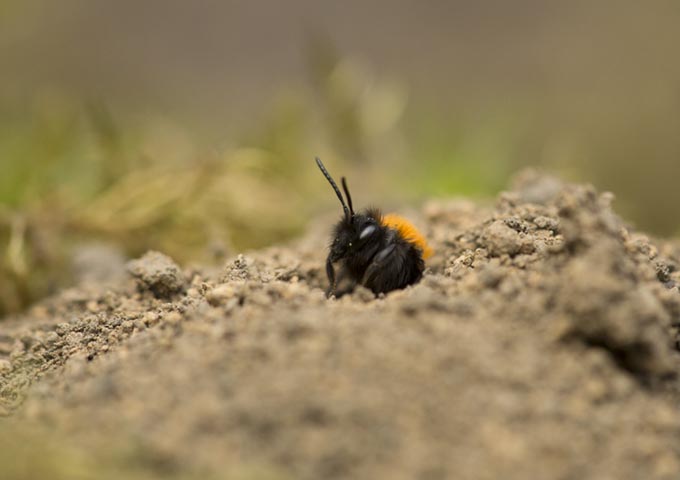
When I have a few hours to spare or I am not concentrating on a project I try to work with my macro lens in my garden. Earlier this year I had decided that I wanted to record the tawny mining bees that build their super mini-pyramids in one of our flower beds. Tawny mining bees are a solitary, early spring species. Each female digs a burrow in the soil and deposits the spoil from her mining as a mini-pyramid. At night the main hole is plugged to stop un-invited guests and rain. As the sun warms the soil in the morning she will venture forth to collect pollen which she stock piles in the burrow to feed her growing grubs. Hopefully she will have collected enough pollen before she dies and blocks up the nest burrow. The grubs feast on the pollen, grow and pupate. They over-winter as pupae and emerge the following April to start the whole process again. The males are smaller than females and after they have mated play no part in collecting pollen or mining the nest.
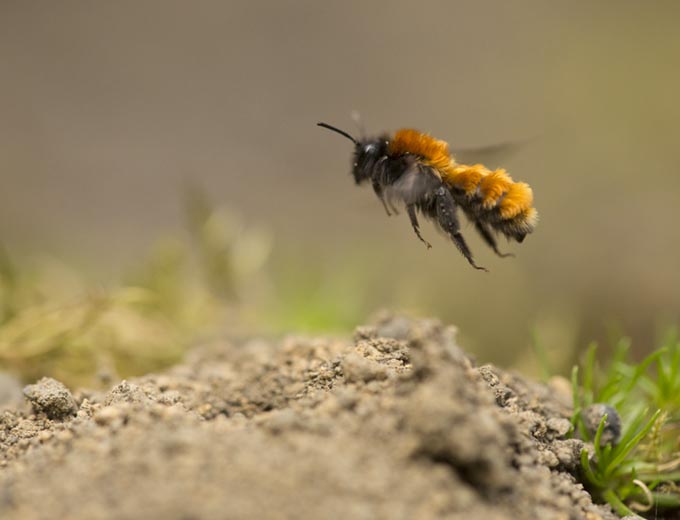
I spent a couple of days with my 180 macro and 5D watching a small number of earth pyramids in April. It was not that easy to photograph the bees. If I moved slightly as they emerged from the burrow they would retreat a bit so it was often a waiting game. When they returned they literally flew straight into the burrow, no hanging around waiting for me to get a shot!
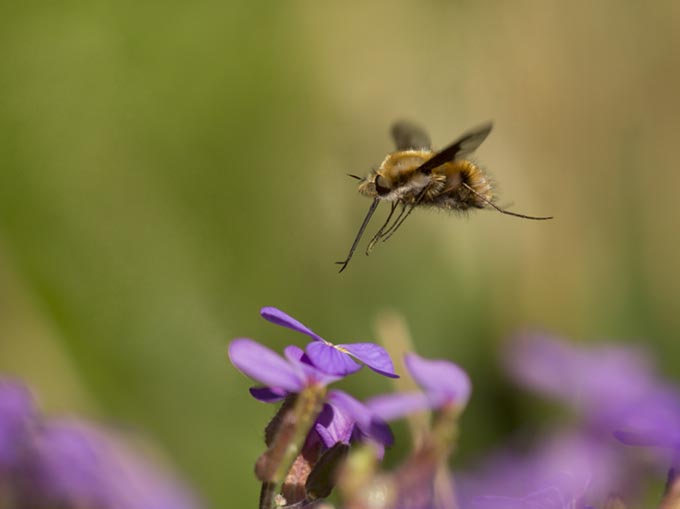
Oddly as I was spending hours with the bees I became very aware of the other insects that live in this part of my garden. One particularly caught my attention because of its amazing mouth part, like a huge long spear sticking out of its head. I only had a brief glimpse as it fed very briefly on some flowers a yard or so away from the mining bees pyramids. I didn’t realise any connection here yet.
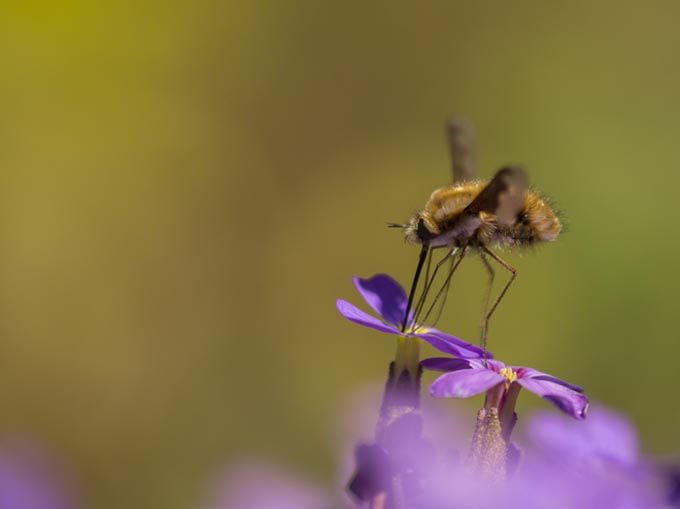
A week or so later I was spending time trying to photograph bees gathering nectar when I spotted that odd bee again which I now recognised as a brown-edged bee fly. It was like a small furry bee with high speed wings and a dagger like mouth, a stunning mini beastie! I had previously looked up this insect when I had first spotted it and it turned out to be a fly, not a bee (2 wings instead of 4). Incredibly when I looked up how they bred I discovered that they lay eggs in mining bee nests and the bee-flies young eat mining bee grubs. An amazing connection between 2 of the more spectacular insects in my garden.
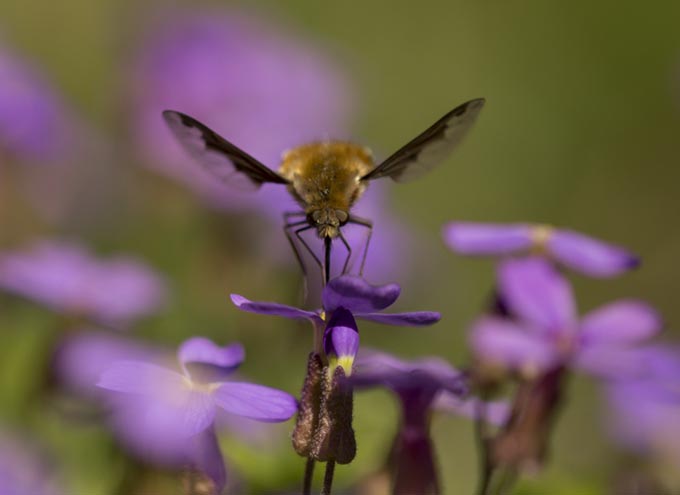
Photographing the bee fly was not easy. If I tried to stalk it when it was feeding on nectar it quickly spotted me, not surprising really!!! I did notice though that it had a bit of a set routine visiting different groups of aubrietia plants. I found that if I simply lay and waited the bee fly would turn up and it was quite simple to belly crawl up and get my camera close enough to get the type of shots I wanted. Perhaps not as spectacular as bears or puffins but I am finding that working with my macro lens on some of the less well recorded insects is really good fun and very rewarding.

